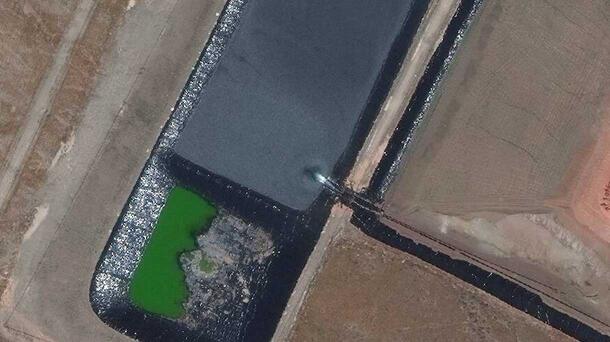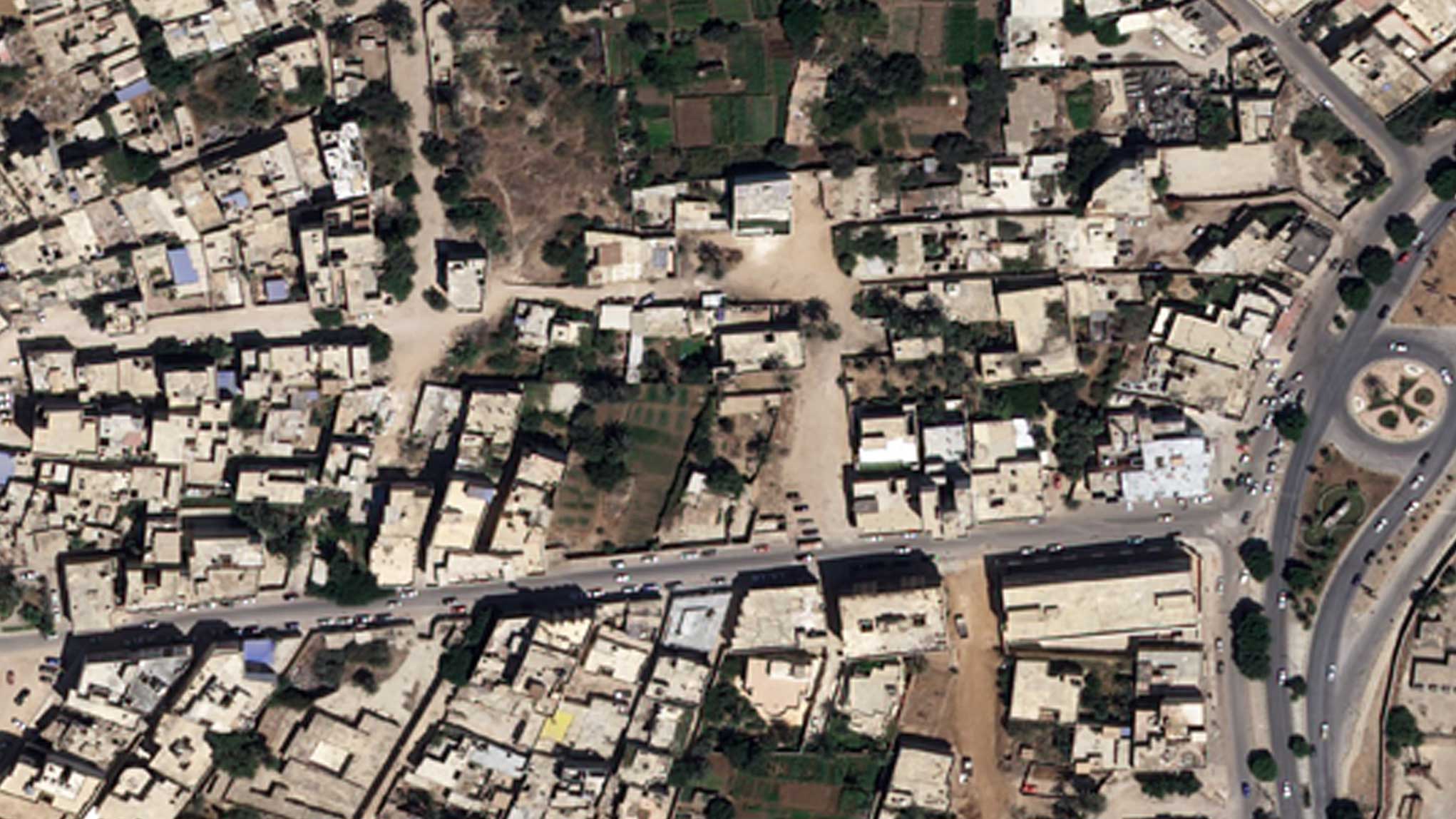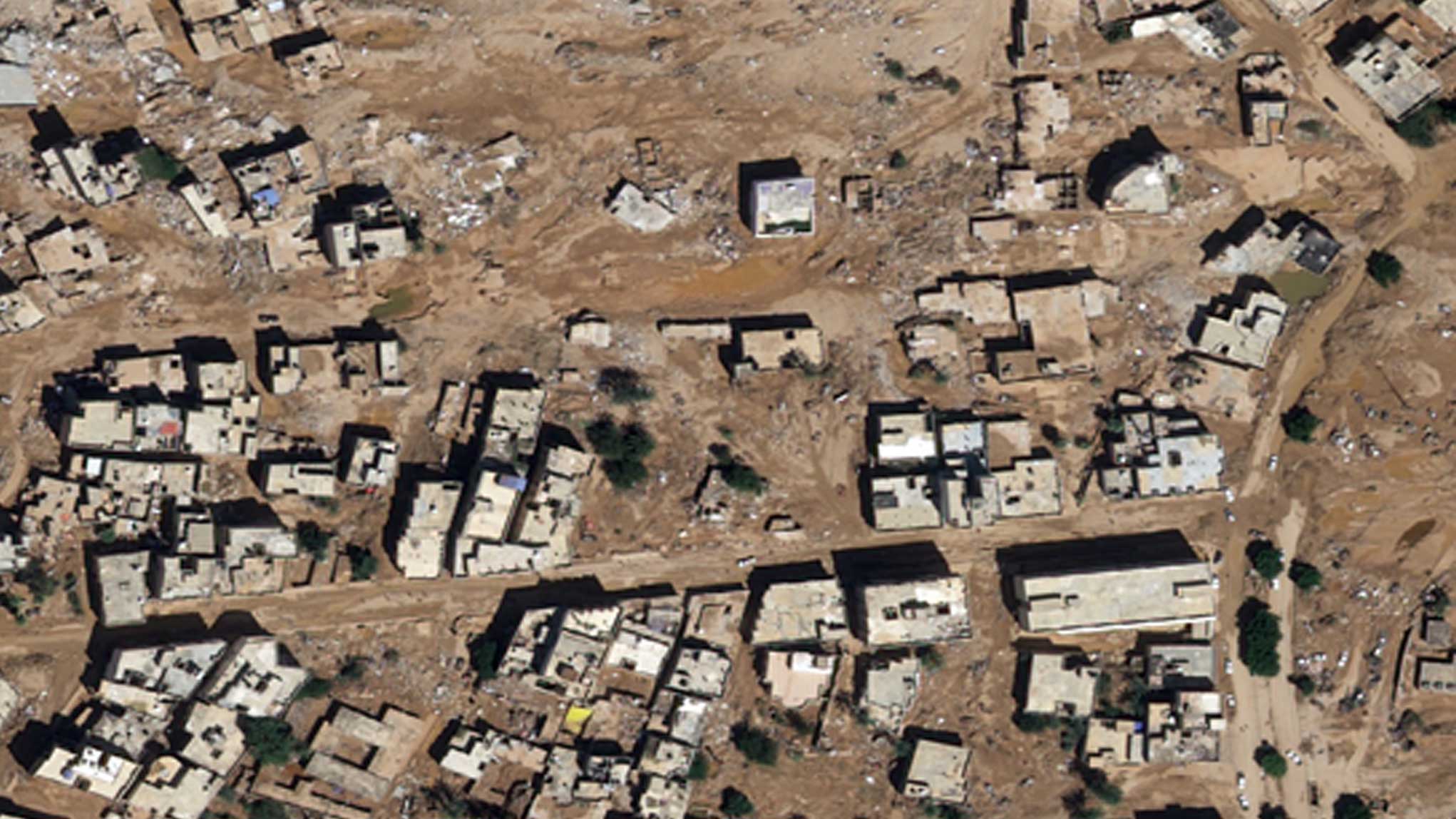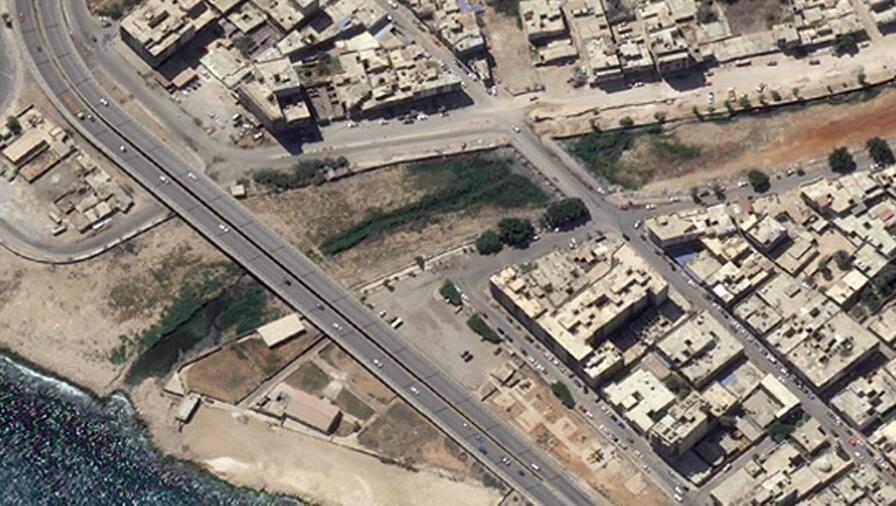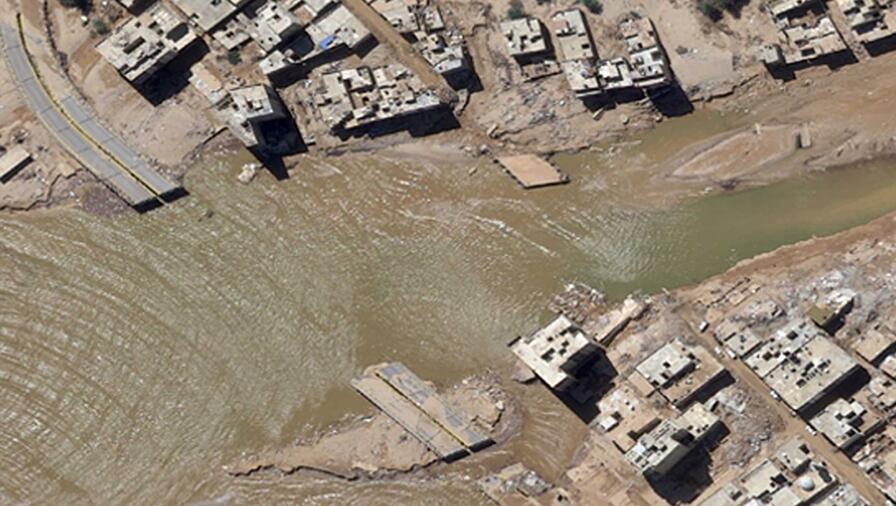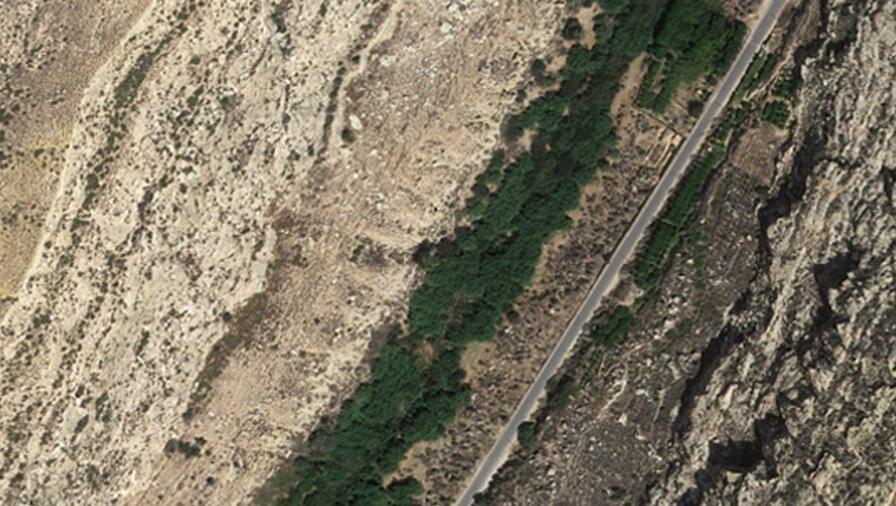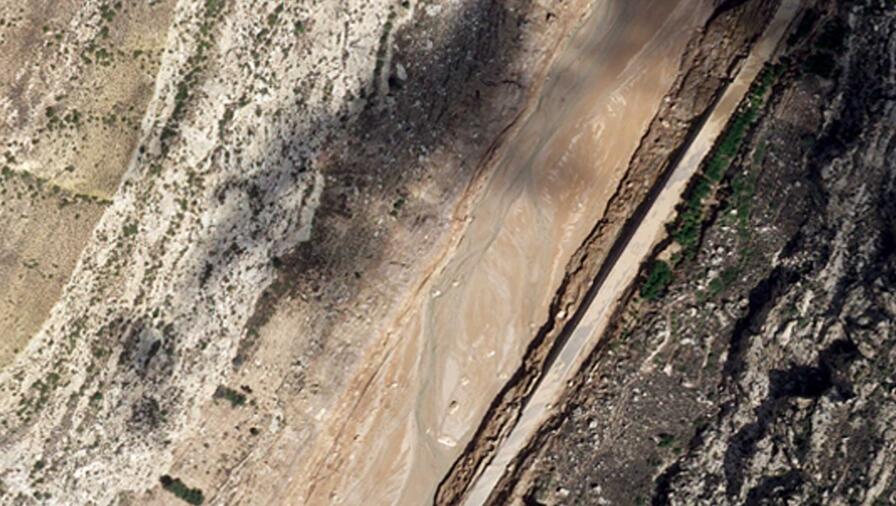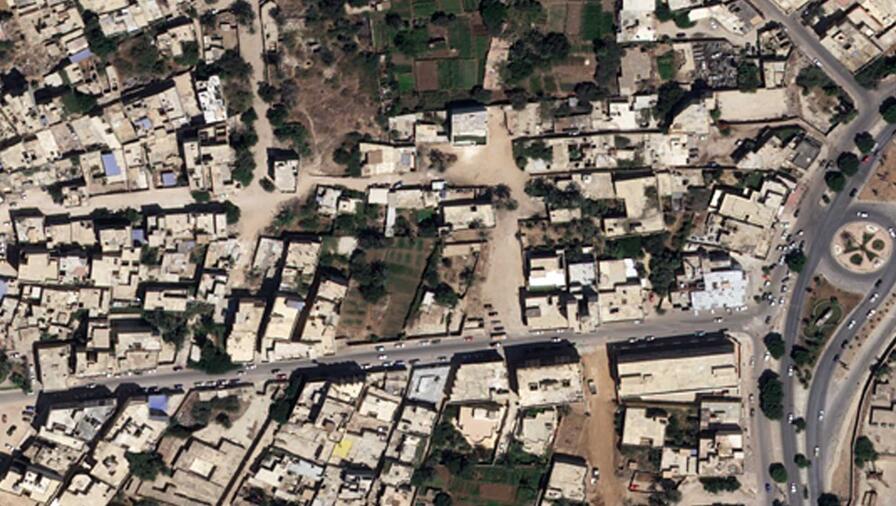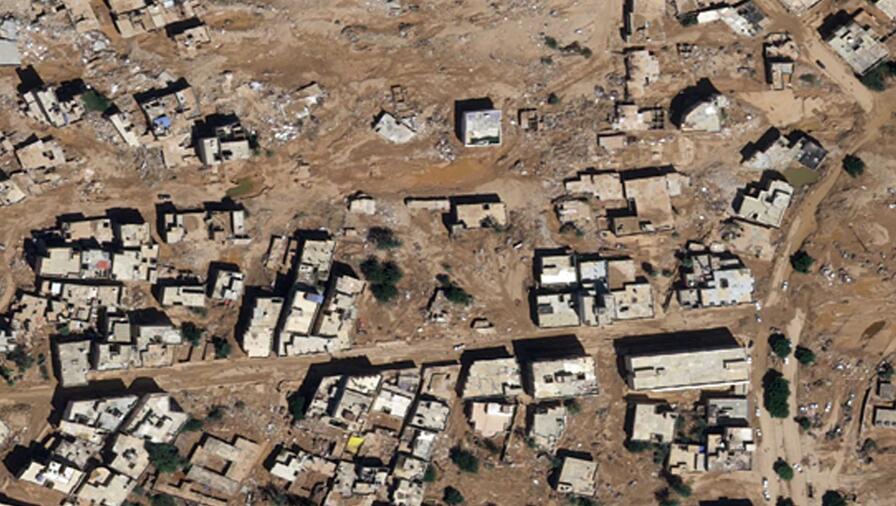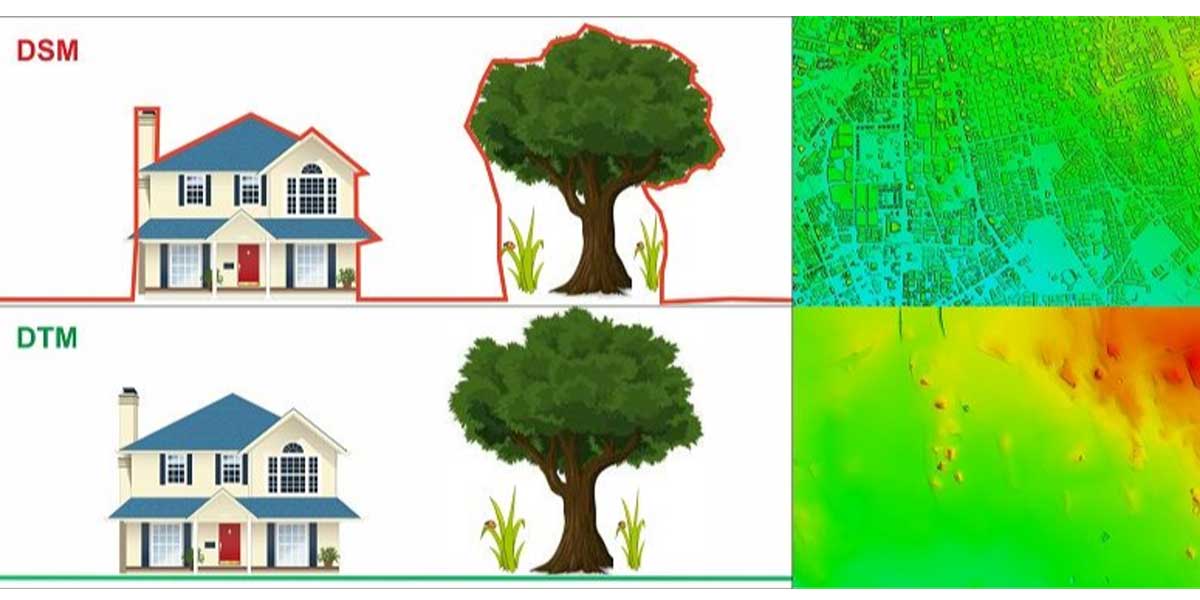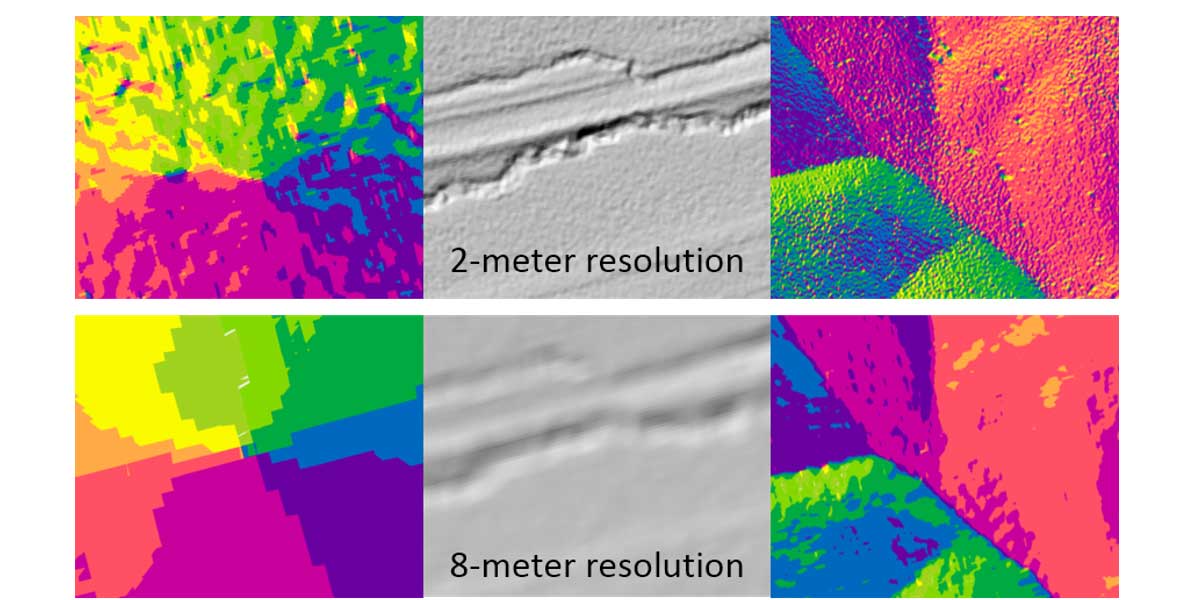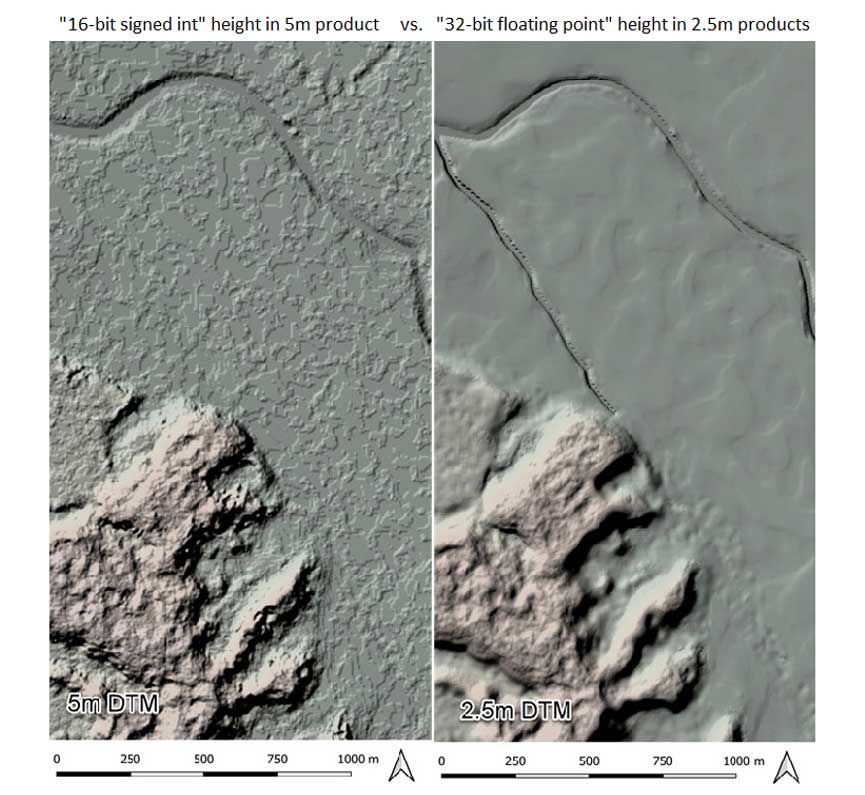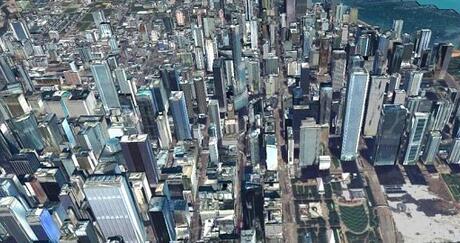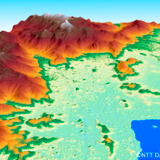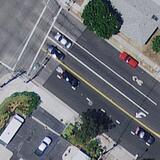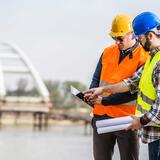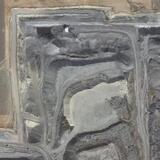Depending on your project's requirements and goals, we can help you present flood models as digital surface models (DSMs) or digital terrain models (DTMs), each being a continuous, three-dimensional geospatial data type.
In Figure 3 (below) the DSM Graphic illustrates the approximate surface and height that would be delivered in a DSM data set shown by the red line. The features can be seen in the upper right as discernible structures. The DTM Graphic illustrates that human-made structures and vegetation areas are removed and that bare earth height would be delivered In a DTM data set shown by the green line.
Digital Terrain Model (DTM) data is a bare-earth model that contains elevations of only natural terrain features such as barren ridge tops and river valleys. Elevations of vegetation and cultural features, such as buildings and elevated roads, are digitally removed. DTM is hydro-enforced to ensure structures over water bodies (such as bridges and culverts) are removed, water surfaces are flat and watercourses flow downstream.
*DTM may be difficult in areas of very dense vegetation where a high percentage of the ground is not visible on the imagery. While areas that have a high percentage of ground that is obscured by aboveground features, such as buildings & trees, where the DTM will be interpolated from surrounding areas of visible ground, will not be as detailed. In cases where the ground is continuously obscured for large areas, it will not be possible to generate DTM data.
Available DTM and DSM Resolution pixel sizes:
Worldwide
- 0.5-meter
- 1-meter
- 2-meter
- 2.5-meter
- 4-meter
- 5-meter
- 12-meter
- 20-meter
- 24-meter
- 30-meter
Additional resolution options for the U.S. and parts of Western Europe:
- 0.4-meter
- 0.8-meter
- 1.6-meter
DSMs represent the Earth's surface, including natural and built/artificial features like buildings, vegetation and water bodies, along with the terrain's elevation and other structures. They can help assess flood risk in cities where urbanization significantly influences floods.
This graphic (Figure 4) shows the pixel density of three identical locations at both 2 m (above) and 8 m (below). The 2 m data pixels are much smaller and therefore relay much more detail of the terrain. The 8 m pixels are larger and therefore the model features are much more general.
Below is an illustration (Figure 5) of the difference in the 2.5 m and 5 m resolution data products. The 5 m data products have a more stair-stepped appearance. The more detailed and higher-resolution 2.5 m products deliver a smoother and more realistic model of the actual terrain features.
DTMs represent the bare-earth elevation without considering any aboveground features, providing a clearer view of your point of interest's natural topography. They're vital for flood modeling in rural or open areas, where the terrain's natural features influence flood paths. They can also augment digital elevation models by reflecting vector features of rivers, ridges and other natural attributes.
Most flood models are presented as DTMs, but you can also use a combination of DTMs and DSMs. Still, others might also include accurate 3D building data to produce models in highly developed areas. Integrating all available data sets can provide a more comprehensive and precise visual representation of the terrain's characteristics.
